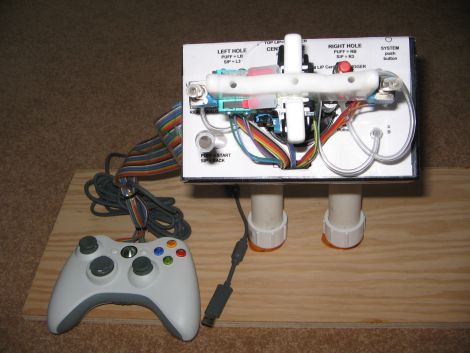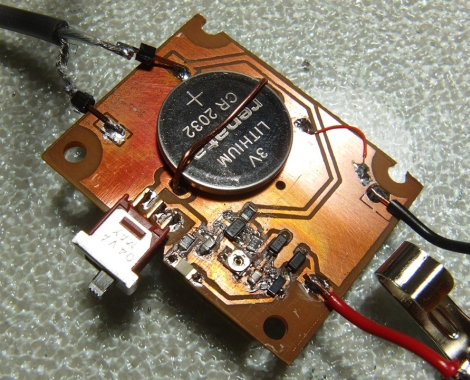
A while back, [Ben Gilstad] built his first HTPC, loading XBMC on it to manage all of his digital media. He loved XBMC’s features and flexibility, but he needed a way to enjoy his DVD and Blu Ray collection on the device without too much hassle. Far before [Ben Heck] considered fitting his Xbox 360 DVD drive into a CD carousel, this [Ben] was busy hacking a Blu Ray player into his.
He bought a broken disc changer at a garage sale, and tore apart a standard SATA Blu Ray player in preparation for the optical drive transplant. An ATMega168 controls the changer’s mechanics, monitoring the carousel’s position and triggering the proper motors when discs need to be swapped out. The AVR currently takes its direction from the HTPC over its serial port via a UDP proxy as XBMC did not support a serial interface at the time he was building the changer.
The second half of [Ben’s] project is an XBMC add-on that he uses to manage his huge collection of optical discs. In order to get XBMC to recognize each disc as a valid ‘file’, he created a clever workaround involving blank WMV clips. This enables him to view his DVDs as if they were digital files on his hard drive, complete with cover art.
It’s a fantastic project, and [Ben] says that his system should be able to support any number of physical disc changers simultaneously, without much issue. Unfortunately the project went on hiatus when he lost his job, so it’s packed away in storage for the time being. Once he gets back on his feet however, he has a whole list of planned changes and improvements to work on – we can’t wait to see it once complete!
Keep reading to check out a video demonstration of his XBMC add-on in action.















